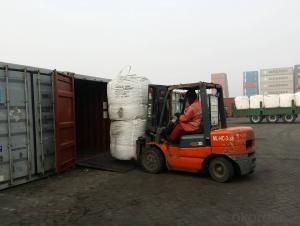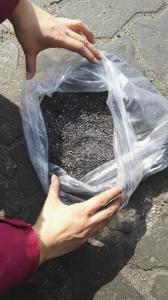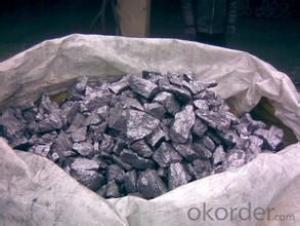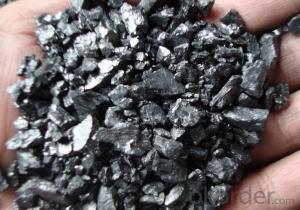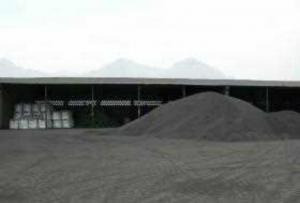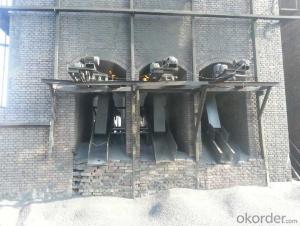FC90% Calcined Anthracite Coal in high quality
- Loading Port:
- Tianjin
- Payment Terms:
- TT OR LC
- Min Order Qty:
- 20.2
- Supply Capability:
- 9550 m.t./month
OKorder Service Pledge
OKorder Financial Service
You Might Also Like
Introduction
Calcined Petroleum Coke comes from delayed coke which extracted from oil refinery. Although Calcined Petroleum Coke contains a little bit higher level of sulfur and nitrogen than pitch coke, the price advantage still makes it widely used during steel-making and founding as a kind of carbon additive/carburant.
Features
Carbon Additive also called Calcined anthracite Coal, Gas Calcined Anthracite Coal, Carbon Raiser, Recarburizer, injection coke, charging coke and etc.
It is playing more and more important role in the industry.The main raw material of our Carbon Additive is Ningxia unique high quality Taixi anthracite, with characteristic of low ash and low sulfur. Carbon additive has two main usage, fuel and additive. When being used as the carbon additive of steel-smelting, and casting, the fixed carbon may achieve above 95%. Carbon additive is becoming more and more crucia in the steel and foundry industry.
Best quality Taixi anthracite as raw materials through high temperature calcined at 1200-1250 ℃ for 24 hours by the DC electric calciner with results in eliminating the moisture and volatile matter from Anthracite efficiently, improving the density and the electric conductivity and strengthening the mechanical strength and anti-oxidation, It has good characteristics with low ash, low resistivity, low carbon and high density. It is the best material for high quality carbon products, it is used as carbon additive in steel industry or fuel.
Specifications
PARAMETER UNIT GUARANTEE VALUE | |||||
F.C.% | 95MIN | 94MIN | 93MIN | 92MIN | 90MIN |
ASH % | 4MAX | 5MAX | 6MAX | 7MAX | 8MAX |
V.M.% | 1 MAX | 1MAX | 1.5MAX | 1.5MAX | 1.5MAX |
SULFUR % | 0.5MAX | 0.5MAX | 0.5MAX | 0.5MAX | 0.5MAX |
MOISTURE % | 0.5MAX | 0.5MAX | 0.5MAX | 0.5MAX | 0.5MAX |
Pictures
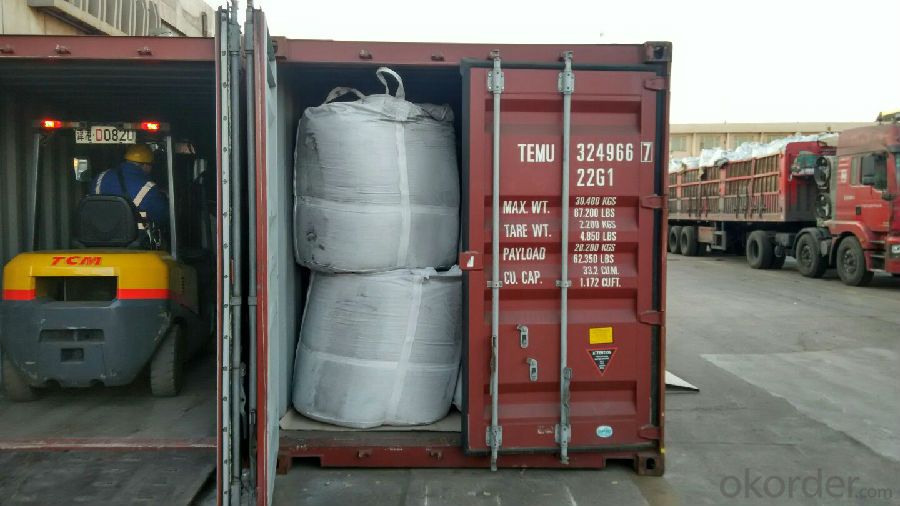
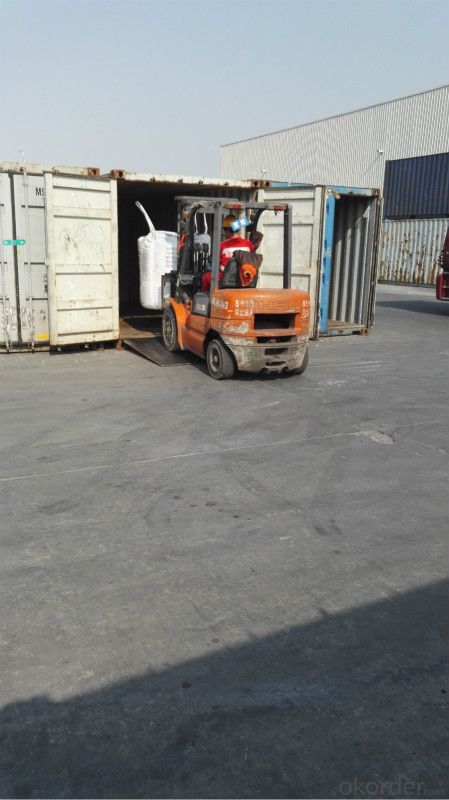
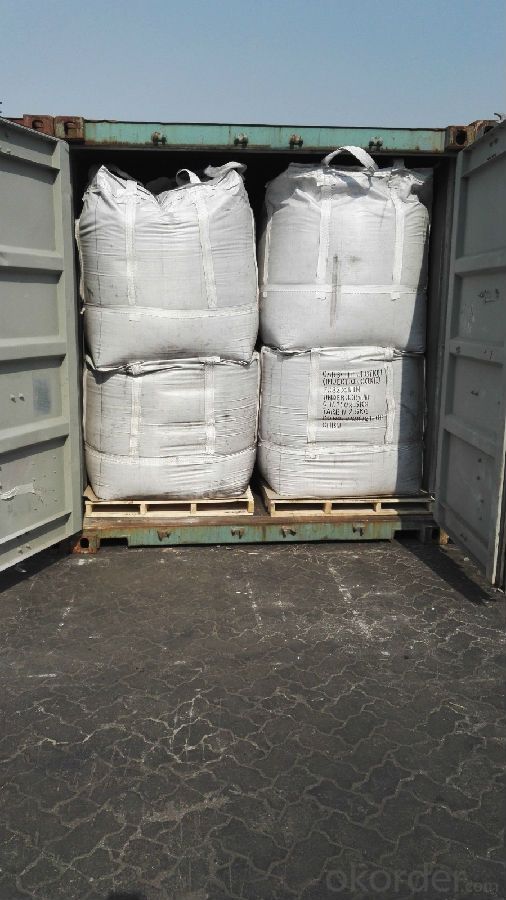
FAQ:
1. What is the packing?
In 25kg bag/ In jumbo bags without pallet/ Two jumbo bags with one pallet/ or as customers’ request
2. What is the production capacity?
10 thousand tons per month
3 What is payment term?
L/C, T/T
4 What is the service?
We will send sample to the third party(CIQ, CCIC, SGS,BV or to be discussed) for checking, and present the test certificate and loading repot of shipment.
- Q: How does carbon impact the availability of clean water resources?
- Carbon impacts the availability of clean water resources in several ways. Firstly, the burning of fossil fuels releases carbon dioxide (CO2) into the atmosphere, contributing to climate change. This leads to rising global temperatures, which in turn affect the water cycle. Increased evaporation rates and altered precipitation patterns can result in droughts or excessive rainfall, both of which can disrupt the availability and quality of clean water sources. Additionally, carbon emissions contribute to ocean acidification, which harms marine ecosystems and disrupts the delicate balance of marine biodiversity, ultimately affecting the quality and availability of freshwater resources.
- Q: What are the impacts of carbon emissions on glacier retreat?
- The impacts of carbon emissions on glacier retreat are significant and alarming. As carbon dioxide and other greenhouse gases are released into the atmosphere, they trap heat and contribute to global warming. This rise in temperature directly affects glaciers by accelerating their melting and retreat. Glaciers act as natural reservoirs of freshwater, and their retreat has severe consequences for water availability, ecosystems, and human populations that depend on them. Additionally, the melting of glaciers contributes to rising sea levels, which poses a threat to coastal communities. Overall, carbon emissions play a major role in driving glacier retreat and exacerbating the impacts of climate change.
- Q: What are carbon credits?
- Carbon credits are a market-based mechanism designed to reduce greenhouse gas emissions and combat climate change. They represent a unit of measurement that quantifies the reduction, removal, or avoidance of one metric ton of carbon dioxide (or its equivalent) from being released into the atmosphere. The concept behind carbon credits is based on the idea that certain activities or projects can help offset the emissions produced by other activities. For instance, renewable energy projects, such as wind farms or solar power plants, can generate carbon credits by displacing the need for fossil fuel-based electricity generation. Similarly, projects that focus on reforestation or afforestation can absorb carbon dioxide from the atmosphere, creating credits. These carbon credits can be bought and sold in the carbon market, allowing companies or individuals to compensate for their own emissions by purchasing credits from projects that have successfully reduced or removed carbon dioxide from the atmosphere. By doing so, they support environmentally friendly initiatives and contribute to the overall reduction of greenhouse gases. The carbon credit system operates on the principle of creating financial incentives for emission reduction activities. It encourages businesses to invest in cleaner technologies and practices by providing a monetary value to the reduction of carbon emissions. In turn, this helps drive the transition to a low-carbon economy and promotes sustainable development. Carbon credits play a crucial role in international efforts to address climate change. They are often used as a compliance mechanism for countries or companies to achieve their emission reduction targets, as outlined in international agreements like the Kyoto Protocol or the Paris Agreement. Additionally, they contribute to the overall goal of limiting global temperature rise by incentivizing emission reductions beyond regulatory requirements. While carbon credits have been criticized for potentially allowing companies to continue polluting by simply purchasing credits, they remain an important tool in the fight against climate change. They provide economic benefits to sustainable projects and encourage the transition to cleaner technologies, ultimately helping to mitigate the environmental impact of human activities.
- Q: What are the impacts of carbon emissions on the spread of infectious diseases?
- The spread of infectious diseases is significantly impacted by carbon emissions. When fossil fuels like coal, oil, and natural gas are burned, they release large amounts of carbon dioxide (CO2) and other greenhouse gases into the atmosphere. These emissions contribute to climate change, which in turn affects the distribution and transmission of various infectious diseases. Changes in temperature are one of the main ways carbon emissions influence the spread of infectious diseases. As global temperatures rise, it creates favorable conditions for disease-causing agents and their vectors to survive and multiply. For example, warmer temperatures can expand the geographic range of disease-carrying insects like mosquitoes, which transmit diseases such as malaria, dengue fever, and Zika virus. Carbon emissions causing climate change can also disrupt ecosystems and alter the behavior of animals that serve as hosts or reservoirs for infectious diseases. Changes in migration patterns, breeding cycles, and hibernation can affect disease dynamics, making them harder to control. For instance, warmer temperatures may lead to an increase in tick populations, raising the risk of tick-borne diseases like Lyme disease. Moreover, carbon emissions contribute to air pollution, which negatively impacts respiratory health. Pollutants like particulate matter and nitrogen dioxide weaken the immune system, making individuals more vulnerable to respiratory infections such as influenza and pneumonia. These pollutants also worsen respiratory symptoms in people already infected with respiratory diseases. The effects of carbon emissions on the spread of infectious diseases extend beyond humans. Changes in climate patterns can disrupt agricultural systems, resulting in food insecurity and malnutrition. These conditions weaken the immune systems of vulnerable populations, making them more susceptible to infectious diseases. Recognizing the link between carbon emissions and the spread of infectious diseases is crucial in order to mitigate their impacts. Reducing carbon emissions by transitioning to cleaner energy sources and adopting sustainable practices can help mitigate climate change and limit the expansion of disease vectors. Additionally, investing in public health infrastructure and surveillance systems can improve our ability to detect and respond to outbreaks, minimizing their spread and impact on human populations.
- Q: Iron and steel are different in terms of carbon content
- . An iron carbon alloy with a carbon content of less than 2% is a steel, and a carbon content of more than 2% is called iron. Steel is widely used because of its toughness, elasticity and rigidity. Life is exposed to steel, but people call different. For stainless steel, whether or not the magnet is sucked on or not, as long as the quality standards are met, it is stainless steel. Therefore, from the perspective of metallurgy said, no rust said. The main element of stainless steel corrosion resistance is chromium. If the content of chromium is above 10.5%, the steel will not rust. When smelting, the alloy elements added are different, so there is a difference between the magnet and the suction.
- Q: How do plants and trees absorb carbon dioxide?
- Plants and trees absorb carbon dioxide through a process called photosynthesis. Photosynthesis is the process by which plants convert sunlight, water, and carbon dioxide into glucose (sugar) and oxygen. The process takes place in the chloroplasts, which are specialized structures within the plant cells. During photosynthesis, plants absorb carbon dioxide from the atmosphere through tiny pores on their leaves called stomata. The carbon dioxide enters the plant's cells and travels to the chloroplasts. Inside the chloroplasts, energy from sunlight is used to convert the carbon dioxide and water into glucose and oxygen. The glucose produced through photosynthesis is used by the plant as a source of energy for growth, reproduction, and other metabolic activities. Some of the glucose is stored in the plant as starch, while the rest is used to produce other essential compounds. The oxygen produced during photosynthesis is released back into the atmosphere through the stomata. This oxygen is vital for the survival of animals, including humans, as it is necessary for respiration. Overall, plants and trees play a crucial role in absorbing carbon dioxide from the atmosphere through photosynthesis. They act as natural carbon sinks, helping to regulate the levels of this greenhouse gas and mitigate the effects of climate change.
- Q: Why is the longer the carbon chain, the better the hydrophobic properties?
- Alkyl chains, low in polarity, insoluble in water...... Release53 (TA station) of all alkanes alkane chain containing even chemical bonds are sigma bond, charge distribution in the molecule is not very uniform, the movement process can produce instantaneous dipole moment, but the total dipole moment is zero, non polar molecules. According to the similarity principle of compatibility, alkane in general can only be dissolved in carbon tetrachloride, like hydrocarbons and other non polar solvent, so the more you long alkane chain, as hydrophobic groups, then you must material hydrophobicity and better advice and look at textbooks still need some basic theory of organic.
- Q: What is carbon fixation?
- Carbon fixation is the process by which carbon dioxide from the atmosphere is converted into organic compounds, primarily through photosynthesis in plants.
- Q: What is carbon nanoelectronics?
- The field of research and development known as carbon nanoelectronics focuses on using carbon-based materials, like carbon nanotubes or graphene, to create and advance electronic devices and components on a nanoscale level. These tiny carbon structures have unique electrical properties that make them highly desirable for a wide range of electronic devices, including transistors, sensors, and interconnects. One of the main advantages of carbon nanoelectronics is the exceptional electrical conductivity and thermal properties of carbon nanomaterials. For example, carbon nanotubes have excellent electrical conductivity, comparable to copper, but with a much smaller size. This allows for the creation of smaller and more efficient electronic devices, leading to advancements in miniaturization and energy efficiency. Another important aspect of carbon nanoelectronics is the incredible strength and flexibility of carbon nanomaterials. Graphene and other carbon-based structures have exceptional mechanical properties, making them highly durable and resilient. This makes it possible to produce flexible and wearable electronic devices that can adapt to different surfaces, opening up new opportunities for electronics design and integration. Furthermore, carbon nanoelectronics offers the potential for high-speed and low-power electronic devices. Carbon nanomaterials have unique electronic properties that allow them to carry electric charge at extremely high speeds, making them suitable for high-frequency applications. Additionally, the low power consumption of carbon nanomaterials can lead to the development of energy-efficient electronic devices. In conclusion, carbon nanoelectronics has the potential to revolutionize the field of electronics by enabling the creation of smaller, faster, and more energy-efficient devices. Ongoing research and development in this field are expected to bring about breakthroughs in various industries, such as computing, telecommunications, healthcare, and energy.
- Q: How does carbon dioxide affect the acidity of rainwater?
- Carbon dioxide (CO2) dissolves in rainwater to form carbonic acid (H2CO3), which increases the acidity of the rainwater.
Send your message to us
FC90% Calcined Anthracite Coal in high quality
- Loading Port:
- Tianjin
- Payment Terms:
- TT OR LC
- Min Order Qty:
- 20.2
- Supply Capability:
- 9550 m.t./month
OKorder Service Pledge
OKorder Financial Service
Similar products
Hot products
Hot Searches
Related keywords
